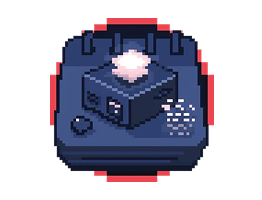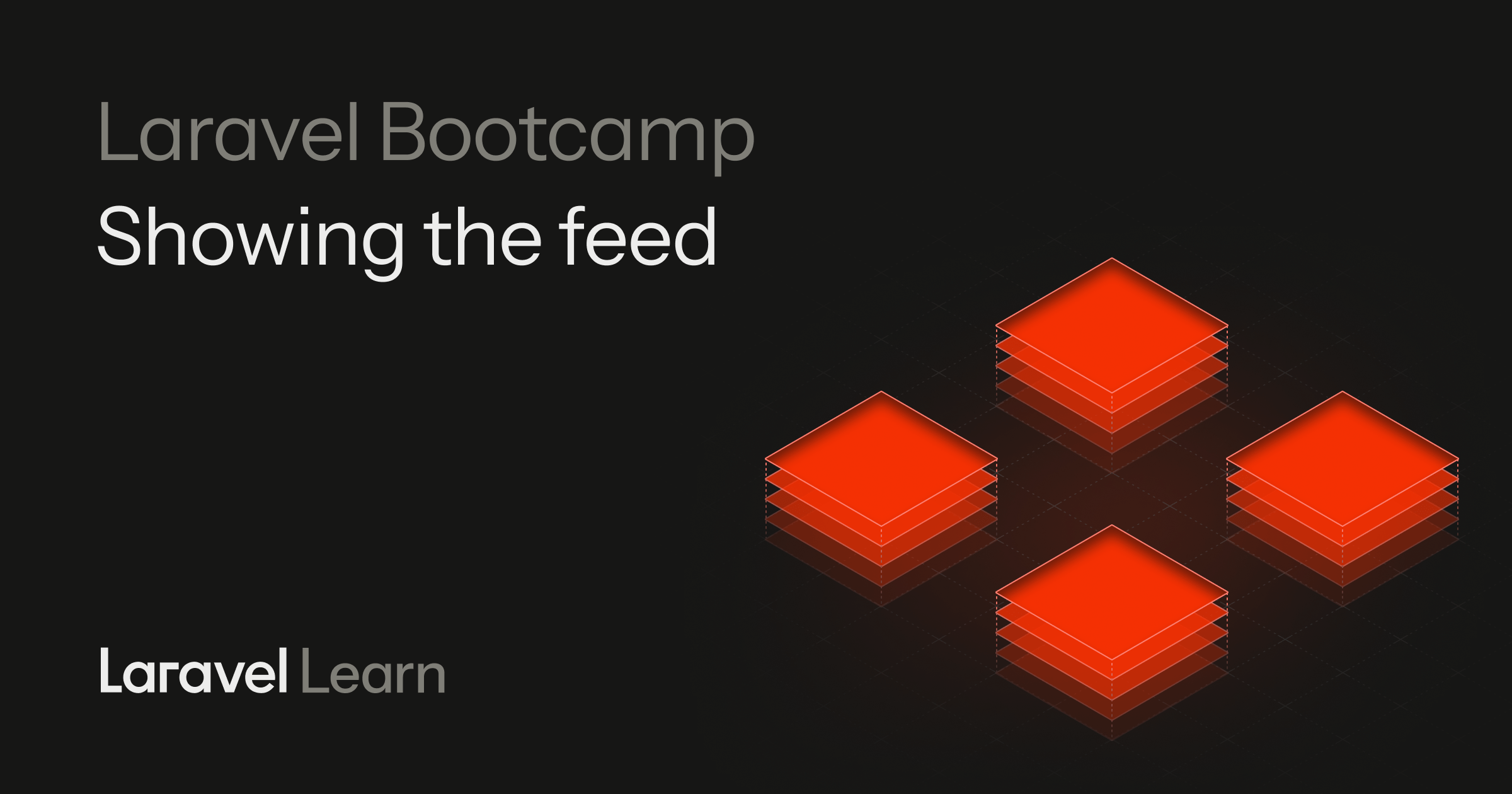00:00
Like we explored in the last lesson.
00:02
Now that you have a database, there's a number of different ways that you
00:04
can interact with that database.
00:06
You can use A GUI like Table Plus or D Beaver to interact with your database,
00:11
even insert new things, delete things.
00:14
Uh, that's a little bit more hands-on where you have a more manual approach
00:17
within PHP Artisan Tinker to use maybe raw sequel, which sounds a little crazy and a
00:24
little strange and maybe a little scary.
00:27
But you can also use something like the DB facade, which Laravel gives out of
00:31
the box to say, Hey, here's a little bit easier way of working within a database.
00:36
But don't worry, it gets even easier.
00:39
Right now, this lesson we're gonna talk about models.
00:43
If we're going back to our restaurant analogy, the M
00:45
and MVC model is our kitchen.
00:49
It prepares the food, it organizes your data structure.
00:52
It keeps everything nice and neat,
00:54
and in alar application, you can use models to interact with your
00:58
database in a really, really beautiful way, an eloquent way.
01:03
So, as you can see here, I'm gonna zoom out a little bit.
01:05
We already have a model created for us.
01:07
That's the user model.
01:09
So why don't we take a look at what this actually looks like.
01:13
There's a few things I want to point out.
01:15
First, there's things like it can use specific things within Laravel,
01:19
like has factory or notifiable.
01:22
We won't dive into either of those, this course, but it's helpful to
01:27
know that there are things that can interact with a model as a whole.
01:30
Next we have this fillable array.
01:32
This is just to show Laravel that people can, within your application,
01:36
enter a name, an email, and a password into this table in your database.
01:41
so this fillable array is the one that we're gonna focus on as we
01:43
create a new model for our chirps.
01:46
There are other additional arrays like hidden or casts, and what this
01:49
does is allow you to, uh, interact with your model in even more depth.
01:54
We won't touch those just yet,
01:56
so let's go ahead and create our own model.
01:58
Opening up our terminal again.
01:59
PHP Artisan Make Model.
02:02
And then we're going to pass it a singular capitalized name for our model.
02:08
In this case chirp.
02:09
Again, if we want to just leave that off, it gives us a little indicator of what
02:14
that should be named in this case flight.
02:17
But I'm not using flights, I'm using chirps.
02:20
Now before I run this make model command for our chirp, I did want to make a note
02:25
that Laravel has this time saving flags for models that if we were to create
02:29
a model but add a dash a parameter of MRC, this would do everything that
02:34
we've already done within this course.
02:36
So would create the chirp model, of course.
02:38
So it would create.
02:38
An m, a migration like we did in lesson six.
02:41
It would create a resource controller like we did in lesson five, and
02:45
that's RC for resource controller.
02:48
But since we already have those, we're just going to make the model
02:50
Heading into that chirp model.
02:52
Just like I said, we want to first focus on that fillable array.
02:56
So in this protected fillable array, we're just going to have our
02:59
message, and this is because this is the only field in our model that
03:04
we need to enter into the database,
03:06
Laravel eloquent allows us to attach these relationships between different models.
03:12
That's gonna be great for us because we have, users that are
03:15
associated to chirps and chirps that are associated to a single user.
03:20
So we can do just that.
03:21
We can create a public function of user and here's where we can type
03:25
hint this to say, this belongs to.
03:28
We're pulling that in, this use Illuminate database, eloquent relations.
03:33
Type, we're going to return this, which is this model belongs to, and
03:41
then we can pass in the user class.
03:44
So in this case, the user model, and this is letting Laravel know
03:48
throughout this application, anytime we call the user on our chirps,
03:52
will be able to grab the user's information that's associated
03:55
to that single instance of a chirp or multiple chirps.
03:58
Now we wanna do the inverse for what we already have within our
04:02
Laravel application for our user.
04:04
So if we go to our user model, we want to have this user associated to chirps, and
04:09
this is more just for simplicity's sake.
04:11
If I want to grab a single user's chirps, then this would
04:15
be helpful and we're gonna do.
04:17
Just that public function chirps.
04:20
Again, this is on the user model.
04:22
We're going to type hint this with a has many relationship and
04:26
that was imported in at the top,
04:28
and then we're going to return.
04:30
This has many and we're going to pass in again that model of chirp class.
04:37
And since we're in the same model namespace, we don't have to bring
04:41
in that chirp model, as a import.
04:44
So what do these relationships actually look like in code?
04:47
I kind of talked through it with you, but why don't we actually write it out?
04:51
If I want to grab a Chirps user, I could do this, or this is a chirp and I want
04:57
to grab the user and this would give me, uh, something like, Hey, this is Josh.
05:04
Again, this is just handy to know how all this fits together.
05:07
So in PHP Artisan Tinker, and again, while this is just, muscle memory
05:13
to be able to learn how Tinker works and how our model works, you could
05:17
do this with something like AI or even within a graphical interface
05:21
to create these new users or maybe even chirps associated with the user.
05:25
But this lets us know how our models relationships also work as well.
05:30
So if I wanted to create a new user, we could use the.
05:32
User namespace, the app slash models slash user namespace, and
05:38
we want to create a new user.
05:40
Now, here's where we can input the name of Josh.
05:50
then we could enter the password.
05:52
Now, Laravel gives us a easy way to enter a password without
05:57
having to encrypt it ourselves.
05:59
We can do this B Crypt function.
06:02
Where I'm going to then enter my password and then we'll just say
06:05
that this is a testing password,
06:08
and then we're going to close this out.
06:11
We have our new user.
06:14
So now this user can have chirps associated with it.
06:16
So why don't we do that?
06:18
We already have the users.
06:19
So now I want to create a new chirp.
06:22
So let's say a new chirp is going to be from the user in
06:26
this PHP Artisan tinker session.
06:29
We want to say that they're chirps.
06:31
I want to create a new chirp for this user, and the message
06:37
is going to be, this is a new associated chirp created by Tinker.
06:44
And again, close that out.
06:47
Oops, I had that backwards up there.
06:50
So we need the bracket and then the parentheses.
06:56
This is a new associate chirp and it's automatically
06:58
attached to the user ID of one.
07:00
The user that we just created that is then in our user variable.
07:04
So why don't we see what this actually looks like now using that relationship?
07:09
We can echo out the chirp user name.
07:16
It's simple as that.
07:18
We don't have to make a fancy sequel query in order to grab that
07:22
name and then be able to make sure that that's actually our name.
07:25
It just works because we created that relationship.
07:28
And of course we can use our model in different ways too.
07:31
We can say that the app models chirp.
07:34
I want to grab all of the chirps.
07:37
Well, it's as simple as this.
07:38
We're grabbing all of the chirps.
07:39
We just have one in our database.
07:41
But, uh, that's neat to know that within one line of code, I can get all of
07:46
the chirps, all of their information, the users that are associated with
07:49
them, and we can do the same thing.
07:52
And instead of all, we can say even the latest and we'll get those as well.
07:57
And this is the same thing, but it would get the ones most recent first
08:02
where if we had multiple chirps up here for all of the chirps, it would
08:06
show them in, chronological order, the order that they were created
08:11
rather than most recent first.
08:13
And all of this is going to be extremely helpful as we start
08:15
building out our chirp application.
08:17
Because you need all of these queries.
08:19
You need these eloquent model relationships as well as knowing,
08:24
okay, how do we get the latest chirps actually sent to our view?
08:29
I am going to exit out, tinker.
08:31
Now, let's go ahead and update our controller with our real data now,
08:35
because if we remember in our chirp controller, we were just passing in
08:39
fake chirp data, well instead, instead of this chirps array, why don't we
08:44
actually grab the chirps from the model?
08:47
We can bring in that model right up here.
08:50
Use app models, chirp.
08:52
And I want to say, I want to grab all the chirps with the user.
08:57
This is so that we can eager load that user relationship and it prevents n
09:01
plus one queries in that case, having to query the database multiple times
09:05
for things that we already have.
09:07
We want to grab those chirps via the latest.
09:10
Let's say we want to take 50 of them.
09:13
Maybe this is so that we don't, uh, have all of the chirps loaded on one screen.
09:18
There's other ways around this, but for now, this is going to be the easiest,
09:21
and then we're going to get those chirps and we shouldn't have to change anything
09:25
else because we're still passing that chirps variable to our chirps, uh, home.
09:30
So there's a few things that we need to change in order to update
09:33
our view to accept this real data.
09:36
First of all, it's not an array anymore, it's an actual model, and that's
09:40
going to look a little bit different.
09:42
I'm going to pace this in, then we'll walk through exactly what changed.
09:44
First I changed things to four Ls.
09:47
This is a little bit easier, but mostly so I can teach you something new.
09:51
This says four Ls, all the chirps as chirp.
09:55
This still exists in the same way, but if it's empty, then
09:58
we can show an empty state.
10:00
There's no chirps yet.
10:02
then every thing that we would have passed as an array in our
10:06
PHP now is the chirp message.
10:09
This is associated to that model.
10:12
Now chirp created that, and this is a cool little Laravel helper diff for humans,
10:19
which is going to tell us how long ago did this actually happen, that specific date.
10:24
And then this is just showing that it's going to say the
10:26
user name if that user exists.
10:28
Otherwise, it'll be anonymous because again, we have the ability,
10:32
at least right now, to say that no user has to create a chirp.
10:36
We can create one without having an authenticated user.
10:39
So what does this look like in the browser?
10:41
Well, it looks like this.
10:42
You can see this was a chirp that was created by us.
10:46
We did that within Tinker.
10:48
I'm gonna go in the database and create some more just so you can see.
10:51
In our chirps, we're gonna create a new one.
10:53
We don't have to use it as a user id, but I'm just gonna say this is my second chirp
10:59
and we're going to say that this is the same date and time
11:03
just for simplicity's sake.
11:05
We have an anonymous chirp because this chirp does not
11:07
have a user associated with it.
11:10
Lemme do this a couple more times.
11:12
We're starting to see how this is turning into a real world application.
11:15
We're having things stored in the database, at least we're being able to
11:18
then read them and also take relationships from 'em saying, Hey, this is anonymous.
11:23
There's no user associated with it, but this one has a
11:26
user, and that user has a name.
11:28
Just to confirm how those relationships work, instead of showing user name,
11:32
maybe I want to show user email here.
11:36
There's the email that I entered for my user that I created.
11:39
So now your app has real data.
11:41
You have chirps that are in the database, but you now have an easier
11:44
way to work with those chirps using models and specifically using eloquent
11:48
within Laravel to query that data, but also write that data as well.
11:52
And those relationships between users and chirps is something that's going
11:55
to make this application a whole lot easier in the end and every application
11:59
that you make within Laravel.
12:01
So next up, let's clean up our application a little bit, get some UI
12:04
niceties in there, componentize some things, and then get our database and
12:08
our application ready for users to start entering their own information.







